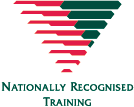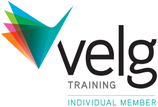Congratulations on taking the initiative to learn about project planning! This essential skill is the backbone of successful project execution. Whether you’re working on an assignment, personal project, or collaborating on a team effort, a well-crafted project plan will serve as your roadmap to success. In this blog, we will break down the key steps to create an effective project plan that ensures smooth sailing from start to finish.
Step 1: How do I define a project?
Before diving headfirst into planning, it’s crucial to have a clear understanding of what the project aims to achieve. Begin by defining the project scope, which includes outlining the project’s objectives, deliverables, timelines, and resources. Make sure to consult with stakeholders and team members to gather insights and align everyone’s expectations.
Step 2: How do I set measurable goals in my project?
Ensure that your project objectives are SMART: Specific, Measurable, Achievable, Relevant, and Time-bound. These goals act as benchmarks to gauge progress throughout the project’s lifecycle. Establishing measurable criteria will allow you to track achievements and address any deviations immediately.
Step 3: How do I create a Work Breakdown Structure (WBS)?
Divide the project into manageable tasks and sub-tasks using a Work Breakdown Structure (WBS). The WBS organises work into a hierarchical format, making it easier to assign responsibilities, estimate effort, and track progress. Each task should have clear deliverables and defined dependencies to establish a logical sequence of activities.
Step 4: How do I determine resources needed?
Identify the necessary resources (people, equipment, materials) required to execute each task in the project plan. Ensure that the right people are assigned to the right tasks based on their skills and expertise. In determining what resources are needed where make sure the project is broken down into small tasks and consult with experts in that area about what resources are needed. Resource allocation plays a significant role in meeting project deadlines and maintaining quality.
Step 5: How do I develop a project timeline?
Create a realistic project timeline that considers the WBS and resource availability. Gantt charts are commonly used to visualise the project schedule, showing task durations, start and end dates, and task dependencies. For a simple project you may just use a spreadsheet. Avoid overloading team members with unrealistic deadlines, and build in some buffer time for unexpected delays.
Step 6: How do I develop a risk assessment and mitigation plan for my project?
No project is entirely risk-free. Identify potential risks that could hinder the project’s progress and create a risk management plan. The plan should include strategies to mitigate each risk and contingency plans to handle unforeseen circumstances. Regularly review and update this plan as the project progresses.
Step 7: How do I develop a Communication and collaboration plan?
Effective communication is essential to the success of any project. Establish a communication plan detailing how and when updates will be shared with stakeholders and team members. Encourage open communication and collaboration within the team to foster a positive working environment.
Step 8: How do I monitor and control progress of my project?
Once the project is underway, monitor progress regularly using the project schedule as a reference. Keep an eye on milestones and deliverables to ensure they are being met on time and within budget. Regularly communicate with the team to address any roadblocks or issues that may arise.
Step 9: How and why do I conduct a project review
Learn from experience. Upon project completion, conduct a post-mortem to assess the project’s success and identify areas for improvement. Use these insights to refine your project planning skills for future endeavours. Learning from both successes and challenges will make you a more proficient project manager.
By following these steps, you will be well on your way to becoming a skilled project planner. Remember that planning but being adaptable is key, as no two projects are identical. Embrace the learning process and continually refine your skills to excel in this critical aspect of project management. With practice and dedication, you’ll be able to tackle projects of all sizes with confidence and efficiency. Good luck on your project management journey!
You can grow your skills and study a nationally recognised micro-credential ‘Undertake projects’ and, should you choose, use it as part of your Diploma of Business, totally online with your own qualified teacher, through the Australian Qualifications Institute. Get in touch with Australian Qualifications Institute at enquiries@aqi.edu.au for personalised counselling in broadening your framework of skills with micro-credentials.


